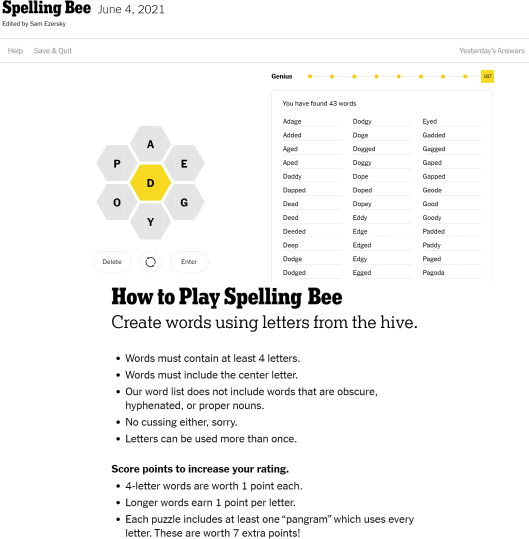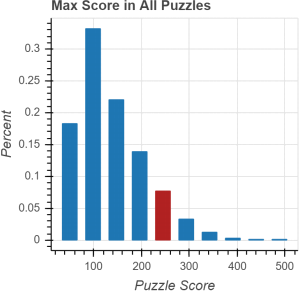Math 183, Final Exam (Takehome), Winter 2022, Quarfoot
Hello, dear friend, you can consult us at any time if you have any questions, add WeChat: daixieit
Math 183, Final Exam (Takehome), Winter 2022, Quarfoot
1. Make sure you have read the Exam Info document (Canvas ≫ Files ≫ Final Exam Materials) that explains which materials are fair to use, and which are not.
2. This exam is due at 9 PM Pacific Time on Wednesday, March 16th, with no grace period for late submissions. Upload to Gradescope, as you do with homework. Like with homework, you’ll be asked to link problems and pages during the upload process.
3. Remember that a list of typos, clarifications, and common student questions is maintained on Can- vas/TritonEd as an Announcement. You should read this before writing an email to me. I will answer email every few hours between 9 AM and 5 PM while the exam is in progress. Do not use Piazza during the exam window; do not discuss the exam on Piazza after the exam.
4. Show all of your work; no credit will be given for unsupported answers. Make sure to include units on all answers, when appropriate. Also, remember to simplify all answers.
5. As with homework, you may either give exact answers or round to three decimal places, unless the problem forces an answer format.
6. Point values are indicated next to each part of each problem. There are 7 problems and 35 total points possible.
1. By the time you reach Math 183, you know how to find the distance between two numbers (|b − a|), between two points ( ^(xA − xB )2 + (yA − yB )2 ), and between other mathematical objects. Is it possible to define a distance between two pdfs? One approach is to set the distance between pdfs f(x) and g(x), denoted d(f,g), as ^2(1 − ρ) where

a. [2 points] Let’s see if this definition makes any sense. Show d(f,f) = 0, as we might hope.
b. [3 points] Let X1 ∼ Exp(λ = α) have pdf f1 (x) and X2 ∼ Exp(λ = β) have pdf f2 (x). Find a simplified expression for d(f1 ,f2 ). As always, use beautiful notation when integrating.
c. [2 points] What is the biggest value d(f,g) could have in general? After explaining why this is the biggest value, dream up two specific pdfs that have this largest possible distance.
2. A J-shaped distribution is a discrete RV for which the bars that make up the probability model either: (i) always decrease as you move from left to right (so the highest bar is on the left), or (ii) always increase as you move from left to right (so the highest bar is on the right).
a. [1 point] Explain why Geom(p) will always be a type (i) J-shaped distribution if 0 < p < 1.
b. [1 point] Find a value of p (where 0 < p < 1) that makes Binom(n = 6,p) a type (ii) J-shaped distribution. Demonstrate that your value of p works by drawing a barchart of Binom(n = 6,p) using the barplot() and dbinom() commands in R. As always, include your code and output as part of your answer.
c. [3 points] What are all the possible values of p (where 0 < p < 1) that force Binom(n,p) to be a type (ii) J-shaped distribution? Give your answer in interval notation. Do not assume n = 6 in this part. Your answer will involve n.
3. Below is an image from the New York Times Spelling Bee, a game recently added to their online offerings. (You can play the game for a little while at that link, but the full game is locked behind a pay wall. Try out the free version until you get the idea.) Your goal is to create as many valid words of length 4 or more using the pictured letters. Each answer must contain the central letter, and you can reuse letters. You can see some of my answers to the June 4, 2021 puzzle below, and each puzzle is guaranteed to have at least one word that uses all of the 7 distinct letters (here, it is PEDAGOGY − the art/science of teaching).
a. [0.5 points] Spelling Bee assigns you a point score and a label that gets better as your point total goes up (see the upper right: On June 4th, I earned 187 points and got the “Genius” label). The support for the label is {Beginner, Good Start, Moving Up, Good, Solid, Great, Amazing, Genius, Queen Bee}. What type of variable (nominal, ordinal, discrete, continuous) are the point score and label variables? (No need to explain your answer or list the supports.)
b. [1.5 points] When you click on the scramble icon (between “Delete” and “Enter”), the game takes the 6 letters on the outer ring and randomly rearranges them (the central letter never moves). This is useful for seeing things differently when you get stuck. What is the probability that after hitting this button, the letters will land in the exact same spots they were before? [WISE]
c. [2 points] Find the letter on the outer ring that is alphabetically first, wherever it may be, and list the letters in clockwise order starting there (for the picture: AEGYOP). On average, how many times would we need to hit the scramble icon before the outer ring would be in alphabetical order (when reading clockwise from the alphabetically first letter)? [WISE]
d. [1 point] If you’re ever stuck, this website gives all the answers and compares the current puzzle to all the other ones that have appeared. One of the interesting visualizations (see next page) shows the different max scores that have appeared over the years and how likely they are to arise. Of the distributions you know, which random variable is the best choice for modeling the maximum available points in a random Spelling Bee game? In one to three sentences, explain your decision. (The red bar shows where the June 4th puzzle fell in the histogram.)
You can read about Spelling Bee creator and crossword constructor Frank Longo here.


4. The Higher Education Research Institute (HERI) conducts a yearly survey of university faculty to get a sense of their lives and commitments. One question of interest is whether faculty spend “at least 9 hours in the classroom teaching per week”. You might be curious if the percentage of faculty who agree with this statement has changed over the past few decades. In 1989, when HERI began its survey, 2845 of 4310 faculty agreed with this claim, and in 2013, 1710 of 3800 faculty agreed with the claim.
a. [5 points] Conduct a hypothesis test with α = 0.01. Note that universities and professors must volunteer to be included in the HERI study. [PHANTOM, VIZ of P-value, Tech not tables]
b. [1 point] Your friend claims that the results seen in part a are the consequence of “increasing pressure on faculty to publish research, rather than teach”. In one or two sentences, how would you respond to your friend (from a statistical perspective)?
[4 points] 5. Recently, I was watching a Twitch stream by barbarousking when a viewer asked if he thought video game sequels were better or worse than the originals. He claimed that sequels were better, citing examples like Super Mario Maker 2, Street Fighter 2, Mortal Kombat 2, etc. Let’s say you wanted to test this using the difference ordering (original rating) − (sequel rating). Your plan is to choose n random games that have both an original and a sequel (and no additional sequels). You’ll run a test with a Type I error rate of 2%, and will assume the standard deviation in the differences is 6.4 (on a 0 to 100 scale used to rate games). If you want a power of (at least) 0.85, what is the smallest sample size you could use? Assume barbarousking’s claim is supported if sequels outperform originals by 3 points, on average. [PH, VIZ with two labelled curves and shaded areas, Tech not tables]
6. The research literature is a mess. Only recently have standards been put in place around reporting of findings. For example, if you look at an article from 30 years ago, it might report a 90% CI for a population mean, but fail to clearly list the sample mean and sample SD! In some cases, it is possible to back-derive results; in other cases, it isn’t. Suppose you were reading an old paper that tried to measure the average weight of products engineered from some process (e.g, the U.S. mint making dimes). The authors pull a random sample of 110 products and report a 90% CI of [2.252 g, 2.284 g].
a. [1.5 points] Back-derive the sample mean and sample SD. [Tech not tables]
b. [1.5 points] Nowadays, most people report 95% CIs, not 90% CIs. Alter the above interval so it is based on a 95% CP. [Tech not tables]
[5 points] 7. You come across a strange die with 2022 sides (labelled 1 to 2022). Instead of being fair, it is weighted in such a way that the chance side i appears is directly proportional to the value of i. This means that side 2 is twice as likely as side 1; side 3 is three times as likely as side 1; etc. Your goal is to repeatedly roll this die until you get 253 even numbers (not necessarily in a row). On average, how many rolls will this take? Give an exact answer written both as a simplified fraction and as a decimal (with 2 decimal places). [WISE]
2023-03-20